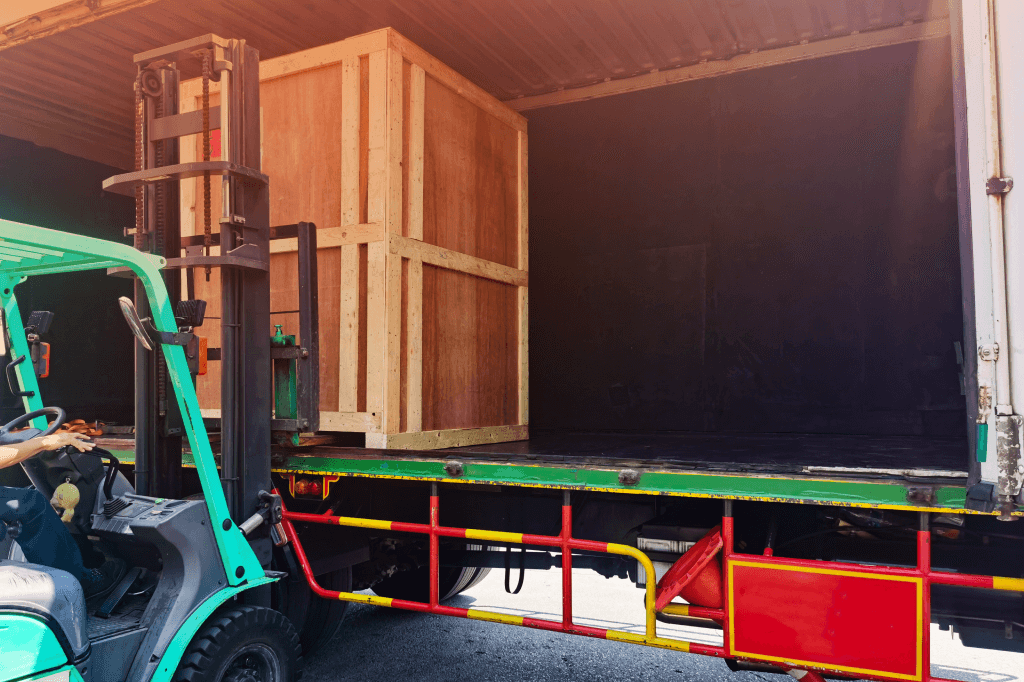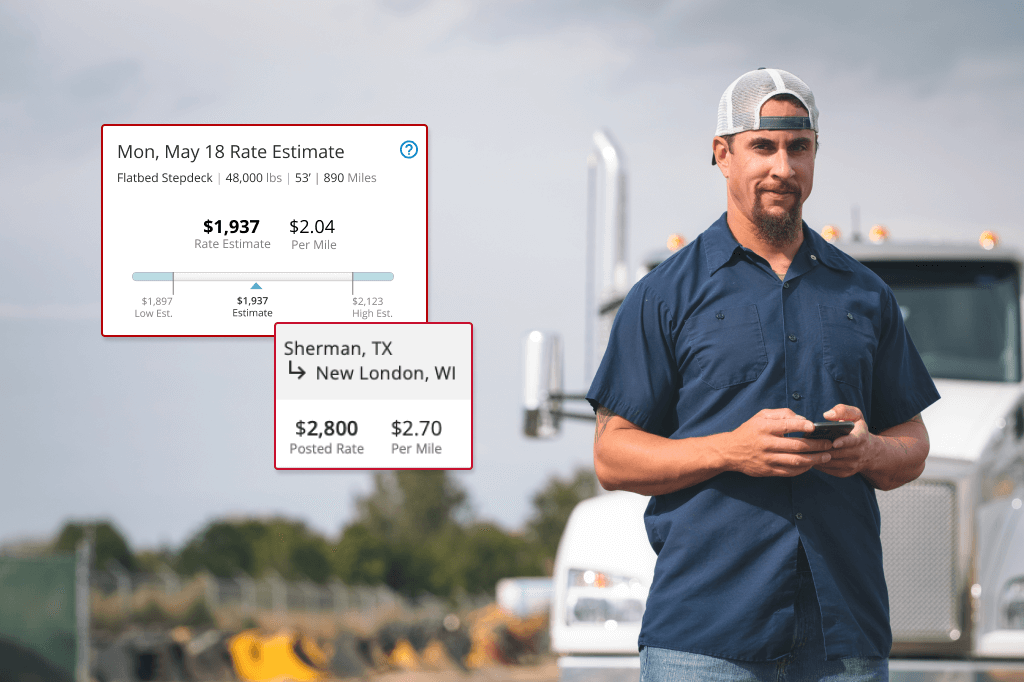what material pays best per ton to haul
Calculating the all-time freight rates tin can be complex. While you need to exist competitive, you also demand to exist profitable. It'southward catchy to constantly counterbalance supply and demand, offering competitive rates that notwithstanding brand you lot money.
You need to take into account your fixed costs of doing business concern. These are the expenses you lot'll pay every calendar month, whether you motion any goods or not, such as insurance, equipment leases or payments, and permitting. You'll also demand to gene in your variable costs, such every bit maintenance and repairs, taxes, and paying your truck drivers. Together, these things assistance decide your base rate or the corporeality you demand to accuse to pause fifty-fifty.

Allow's say your base rate is $1.80 a mile, and anything above that is pure turn a profit. Desire a 20% margin? You lot'll need to charge a minimum of $2.16 per mile. Knowing your base rate is crucial, just it's just one stride in the process.
What are truck freight rates?
The trucking freight rate is the price a shipper or banker will pay y'all — as the carrier — to haul a load. It'due south simple in concept, but as you know, rates tin can vary significantly, fifty-fifty within the same lanes. Having current and authentic information most the boilerplate rate for your loads and lanes is essential to pricing and negotiating rates properly.
How are trucking freight rates calculated?
Trucking rates are calculated on a per-mile basis. First, take the mileage between the starting and destination points. Then divide the full rate by the number of miles betwixt destinations to become your trucking freight rate.
TOTAL Charge per unit DIVIDED Past MILEAGE = PER-MILE FREIGHT RATE
Let'due south say you've got a load that'southward headed to Miami from Atlanta. Depending on your verbal pickup and driblet-off locations, the altitude is roughly 675 miles. If the total rate is $3,200, the per-mile freight charge per unit would be $3,200 / 675 = 4.74. In this example, the rate would be $4.74 per mile.
Of course, computing the overall rate to charge will depend on various factors besides just the mileage.
Available routes and loads
A large part of calculating rates is determining your fleet and driver availability (and chapters!), along with the bachelor routes and the loads you've already taken on. You lot may want to charge more than for a problematic load or one that will require you to reroute a driver significantly.
Shipment weight
The weight of the shipment is a significant cistron. To control costs, you have to carefully manage the overall weight loading for your fleet. If yous beginning with a higher rate for heavy loads, even if the shipper negotiates a discount, you will even so finish up with more total revenue.
Freight classification
In the freight logistics manufacture, each type of shipment has a specific classification. The National Motor Freight Traffic Association (NMFTA) has divers eighteen classes of commodity shipments. Several factors decide freight course, including:
- Product density
- Liability
- Product value
- Treatment needs
- Stowability
Taken together, these factors determine the load'due south transportability. Less transportable loads often control a college charge per unit.
Shipping method
There are 5 basic freight aircraft methods:
- Total truckload (FTL)
- Fractional truckload (PTL)
- Less than truckload (LTL)
- Intermodal
- Expedited
Total truckload (FTL)
As you'd await, FTL applies to a shipment that takes upwardly an entire trailer. It doesn't matter whether it's the smallest truck in your armada or the largest. You're using upward the whole infinite within your hauler. Typically, FTL freight will exceed 15,000 pounds.
Fractional truckload (PTL)
When a load doesn't fill an entire trailer, it's a fractional truckload. Carriers can take on multiple shipments to earn more than per mile and maximize their earnings per trip. Partial truckloads are typically bespeak-to-point, so freight loaded onto a truck stays on board until its destination. But with different shippers, there might exist different locations. PTLs are charged per mile, pro-rated by weight and dimension.

Less than truckload (LTL)
A less than truckload shipment is similar to a PTL in that information technology doesn't take up an unabridged trailer. However, information technology might need to move between vehicles during the shipping process. Rates volition vary depending on whether you can match loads from freight brokers with similar destinations.
Intermodal
An intermodal freight shipment involves multiple shipping methods. For case, information technology'southward intermodal if a load needs to ship by road and track. Considering non-road carrier rates are usually less expensive, intermodal aircraft typically costs less. But it can as well be less profitable for freight carriers if you're not careful nigh estimating rates.
Expedited
The highest rates typically come from expedited shipping. Freight transported in express shipping lanes, such equally overnight or direct routes, commands higher rates.
Dry van rates
Besides freight blazon, weight, and density, dry out van rates are likewise impacted by other factors.
Distance
The most significant factor is delivery distance, which involves gas, vehicle wear and tear, and mileage. Rates besides need to be calculated based on whether you're using an established shipping lane between hubs or major cities or if it's a rural or atypical route.
Supply and need
Supply and demand are frustrating for shippers and why market rates can vary and so greatly. When setting rates, you accept to consider the number of trucks and drivers available forth with what you've already committed to handling.
Seasonal demands
Rates tin also vary past flavour. For example, summer is often a heavy fourth dimension for shipping fresh produce from agricultural areas. This can significantly touch the number of available trucks and increase rates.
Reefer freight rates
The same factors that use to dry van freight likewise utilise to reefer freight shipments of goods that require temperature control. Also, you need to consider additional regulations that can touch pricing.
While all loads are subject area to some regulations, perishable goods such equally produce must follow additional state and local regulations. For instance, some items might require inspection before beingness shipped beyond state lines. Other cargo types must be shipped locally or merely in designated areas, which can add together costs due to loading, unloading, or working with other third-party carriers.
What types of trucking freight pay the best rates?
To maximize your profitability, y'all'll want to movement more freight that pays a higher trucking freight charge per unit.
Typically, flatbed rates are the all-time, but those can vary too if you're carrying special equipment or a big haul that can't fit into a container. LTL shipments typically pay higher rates than full truckloads because drivers make multiple stops and might need to handle loading and unloading.
Routes and cargo too impact rates. In particular, these types of loads tend to pay significantly more than than the average:
- HAZMAT freight. Every bit you might expect, hauling hazardous materials carries some inherent risks. Y'all'll also need a special endorsement. These two factors raise the rates you can charge.
- Ice road freight. Too, driving on a road made of pure ice isn't for the faint of middle. Ice road truckers command the highest rates of all, and you tin nevertheless bulldoze traditional routes during the off-season.
- Liquid and gas tankers. Liquid and gas loads tend to exist unstable. Safety is paramount, and you will need a special endorsement. Wait to accuse more for these challenging loads.
- Oversized freight. Transporting heavy mechanism and other oversized loads takes specialized skills and licensing. Because the job is so complex, the rates tend to be higher.

How to find the all-time trucking freight rates
As you lot can see, competitive trucking rates vary dramatically depending on everything from the type of equipment you have to the routes you lot drive and the cargo yous send. Your base rate is the minimum you need to brand to pause even, just your bodily rates may be significantly higher based on your choices. Truckstop.com offers numerous tools to help carriers negotiate the all-time rates.
- Estimate load action by origin and destination with load density. Perform unlimited load searches. Discover out how many trucks are already in the lanes you want to travel and whether negotiations will be favorable, balanced, or unfavorable.
- Monitor load-to-truck ratios.Load-to-truck ratios tin can help y'all negotiate rates. In full general, every bit the number of available trucks rises, rates become downwards. Every bit the number of available loads rises, rates become up. Monitoring load-to-truck ratios tin can strengthen your negotiations.
- Search high-paying loads beyond lanes. Find out which loads pay the highest rates, regardless of which lane you cull.
- Get rate recommendations by lane and load blazon. With a combination of real-fourth dimension data and monthly trends, you lot'll get the recommendations y'all need to set your rates with conviction with Rate Insights.
Find truck freight rate trends and estimates on the Truckstop.com Load Lath. Y'all tin can check rates against hundreds of thousands of daily loads. By filtering your results based on location, destination, trailer type, weight, dates, and other factors, you can see what loads are available and view charge per unit data.
With Truckstop.com, you can say goodbye to "guesstimates." Predictive data analysis helps you plan and compare your rates confronting regional trends to make the best freight rate decisions. Sign up today or request a costless demo.
Source: https://truckstop.com/blog/truck-freight-rates/
Post a Comment for "what material pays best per ton to haul"